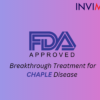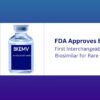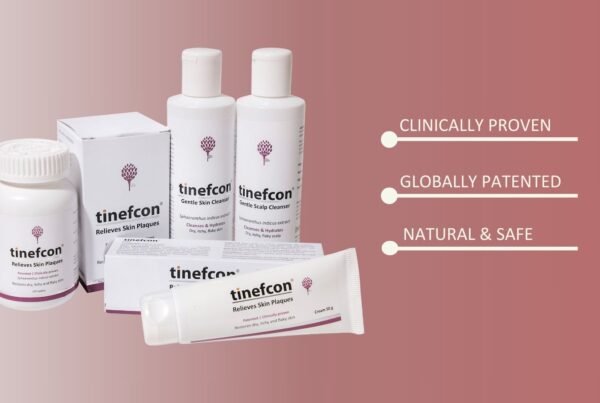Introduction:
Generic medicines play a crucial role in bridging healthcare gaps on a global scale by providing affordable and accessible healthcare solutions. This blog post will discuss the importance of generic medicines in addressing healthcare disparities and their potential to improve health outcomes worldwide.
India excels in generic medicine production, commanding 20% of global supply and leading vaccine manufacturing. With over 3,000 pharmaceutical companies and 10,500 manufacturing facilities, India boasts a robust industry. Additionally, its API industry, with 500 manufacturers, contributes 8% globally. Producing 60,000 generic brands across 60 categories, India meets substantial global demand and provides affordable HIV treatment.
Projected to reach $65 billion by 2024 and $130 billion by 2030, India’s pharmaceutical sector demonstrates significant growth potential from its current $50 billion valuation. With exports to over 200 countries, India fulfills crucial global medicine needs, serving as a key healthcare provider.
Advantages of Generic Medicines:
Generic drugs present several key benefits, foremost among them being the significant reduction in healthcare expenses. Opting for generic medications enables patients to save money while still receiving high-quality care. Additionally, these medicines contribute to equalizing the availability of treatments between developed and developing countries, ensuring widespread access to essential healthcare solutions.
- Affordability:
Generic medications, being generally more economical than their branded counterparts, provide enhanced accessibility to a diverse patient demographic, notably benefiting those in low- and middle-income countries. These generic drugs present a financially prudent option, offering a cost-effective alternative for essential treatments, thereby expanding access to a wider population. This economic viability becomes particularly vital in regions where financial limitations frequently impede the availability of critical, life-saving medications.
- Accessibility:
Generic medicines play a vital role in enhancing healthcare accessibility, particularly in low- and middle-income countries where financial constraints hinder access to essential treatments. Their cost-effectiveness serves as a practical solution, bridging the availability gap between developed and developing nations. Additionally, by enabling broader production and distribution, generic drugs help alleviate medicine scarcity in underserved regions, contributing significantly to global health equity and addressing healthcare disparities worldwide.
Access to generic medicines varies globally. In low and middle-income countries (LMICs), generics make up 70-80% of the private sector market share. However, while Europe and the United States have seen a significant increase in generic medicine usage, there has been little change in Asia and the Middle East/South Asia region. In Europe, generic medicine volume rose from 42% in 2005 to 49.0% in 2009, and in the US, around 80% of prescriptions in retail pharmacies were for generics.
- Disease Prevalence:
Disparities in disease prevalence between developed and developing countries can result in gaps in the utilization of specialty medicines. Generic medications emerge as a solution to bridge these discrepancies, offering more affordable and accessible treatment options.
The widespread availability of generic medicines plays a pivotal role in controlling and eradicating infectious diseases, notably demonstrated in the cases of HIV/AIDS, malaria, and tuberculosis. Generic antiretrovirals and antimalarials have been instrumental in globally expanding treatment options for these conditions.
- Long-term Sustainability:
Generic medicine manufacturers can develop business models prioritizing long-term sustainability, and balancing commercial viability with approaches that increase access to medicines.
Global Health Equity:
- Overcoming Barriers: Generic medicines break down geographical and economic barriers, offering affordable options that empower individuals from diverse backgrounds to access high-quality treatments, promoting global health equity.
- Market Competition: The introduction of generic medicines fosters healthy competition in the pharmaceutical market, leading to lower prices for both generic and branded drugs, benefiting consumers and healthcare systems.
Generic Medicine Exports:

The export of generic medicines enables countries to share their pharmaceutical resources and expertise with others. This can be particularly beneficial for nations facing health crises or resource constraints.
Addressing Healthcare Inequalities:
Multistakeholder Collaboration:
- Insights and Strategies: Collaborative efforts to ensure universal access to treatments inform strategies for widespread access to generic medicines.
- Initiatives and Assessment: Initiatives like the Access to Medicine Foundation’s workshop on generic medicines evaluate companies’ actions, identify opportunities to bridge access gaps, and capture best practices.
Generic Drug Availability Across Different Therapeutic Areas
Recent studies reveal concerning trends in the availability and pricing of generic drugs for Hepatitis B and C. Despite reduced pharmacy prices, out-of-pocket costs for entecavir, a generic Hepatitis B antiviral, increased for privately insured patients from 2014 to 2018. Additionally, certain Medicare Part D plans failed to cover generic Hepatitis C drugs in 2019, resulting in missed savings opportunities.
The global diabetes drugs market, valued at USD 66.15 billion in 2022, is projected to reach USD 134.08 billion by 2030, driven by the increasing availability of generic versions, particularly insulin. However, this trend may challenge pharmaceutical companies with declining market share and revenue.
Global demand for generic oncology drugs is projected to grow at a 6.0% CAGR from 2022 to 2028, representing 17% of the global oncology drugs market, with large molecule generics leading. In immunology, the market was valued at USD 102.41 billion in 2022 and is expected to reach USD 194.28 billion by 2030, with a 10.3% CAGR. Monoclonal antibody drugs dominate, with North America leading. Another report estimates the market at USD 97.9 billion in 2021, growing to USD 184.2 billion by 2028, driven by increasing autoimmune disorders and new therapies.
Government’s Role:
The government’s involvement is essential in facilitating the export of generic medicines through policies and laws that promote competition and ensure affordability. Compulsory licensing is a significant measure allowing the production and export of low-cost generic drugs by bypassing patent monopolies, especially crucial during public health crises like pandemics. Additionally, governmental policies aim to streamline access to generic medicines, promote their use, reduce healthcare costs, and ensure affordability for all.
In November 2008, the Department of Pharmaceuticals, Ministry of Chemicals & Fertilizers, Government of India launched the Pradhan Mantri Bhartiya Janaushadhi Pariyojana (PMBJP) to ensure the availability of quality generic medicines at affordable prices to all citizens. This initiative establishes dedicated outlets known as Janaushadhi Kendras, which provide generic medicines at economical rates, thereby enhancing accessibility to essential healthcare treatments.
The National Health Mission (NHM) operates a free drug initiative aimed at supporting the provision of essential generic medications at no cost in public health facilities.
Stakeholder Perceptions:
Efforts to educate patients and healthcare providers about the benefits of generic medicines can address the preference for branded medications and lack of knowledge, increasing their usage.
Role of the Generics Industry:
The generics industry is positioned to enhance access to essential health products in low- and middle-income countries. Initiatives, such as the Access to Medicine Foundation’s work, aim to mobilize generic medicine manufacturers, ensuring greater access to generic medicines.
Regulatory Standards For Generic Medicines
The regulatory standards for generic medicines are stringent, aiming to guarantee their safety, effectiveness, and quality. Key findings include
- Bioequivalence Data Requirement: Regulatory bodies such as the FDA, Australia, EU, India, and Canada demand bioequivalence (BE) data during registration for all solid oral forms of generic drugs.
- Abbreviated New Drug Application (ANDA) Process: In the United States, generic drug approval follows the ANDA process, exempting the need for the generic drug company to replicate animal and clinical research. Nevertheless, substantiating bioequivalence is obligatory.
- Stringent FDA Approval Criteria: Generic medicines must satisfy identical batch requirements for identity, strength, purity, and quality to secure FDA approval. They must also adhere to the same rigorous standards as outlined in the FDA’s good manufacturing practice regulations.
- Compliance and Manufacturing Challenges: Developing intricate generic drugs necessitates strict adherence to good manufacturing practices to avert regulatory complications that might impede the development timeline. Overlooking proper methods and testing during development heightens compliance risks.
Challenges Faced:
- Regulatory Requirements: Stricter regulations and increased quality maintenance costs pose obstacles for generic medicine manufacturers.
- Quality Assurance: Ensuring the quality and safety of generic medicines is crucial for maintaining trust and confidence among patients.
- Trade Agreements and Patent Disputes: Challenges arising from free trade agreements and patent litigations can hinder the launch of new products and disrupt the stable generic medicine supply. The Korea-United States Free Trade Agreement (KORUS FTA) implemented a patent linkage system, elevating patent challenges as a key consideration for expediting market approval of generic drugs in South Korea.
- Limited Price Difference: The minimal price difference with originator medicines, constant price pressures, and negative stakeholder perceptions contribute to industry challenges.
- Registration Obstacles: In low- and middle-income countries, registration hurdles and lower commercial demand can discourage generic medicine manufacturers.
- Shortages: Generic medication shortages pose risks to healthcare stability, leading to an unreliable generic medicine supply.
- Biosimilar Development Criteria: Limited standardized criteria for biosimilar development and regulatory convergence across countries impact the industry’s ability to introduce newer and more affordable biosimilars.
Conclusion:
In summary, generic medicines are indispensable for sustaining healthcare systems, especially in Europe where costs are rising. Generic medicine suppliers play a vital role in reducing expenses, enhancing access to essential treatments, and bridging global healthcare gaps. Educating stakeholders on their benefits is crucial, and the generics industry holds a central position in improving access globally.
Prioritizing long-term sustainability in business models ensures the widespread availability of essential treatments. Generics stand as pillars of global health, addressing challenges and fostering innovation for a more inclusive and sustainable healthcare future worldwide.
Written By
Aswini PriyaMedical Content Writer
Reviewed By
Dr. AnchalMedico Expert
Last Updated
01 Mar 2024 | 10:00 AM (IST)










